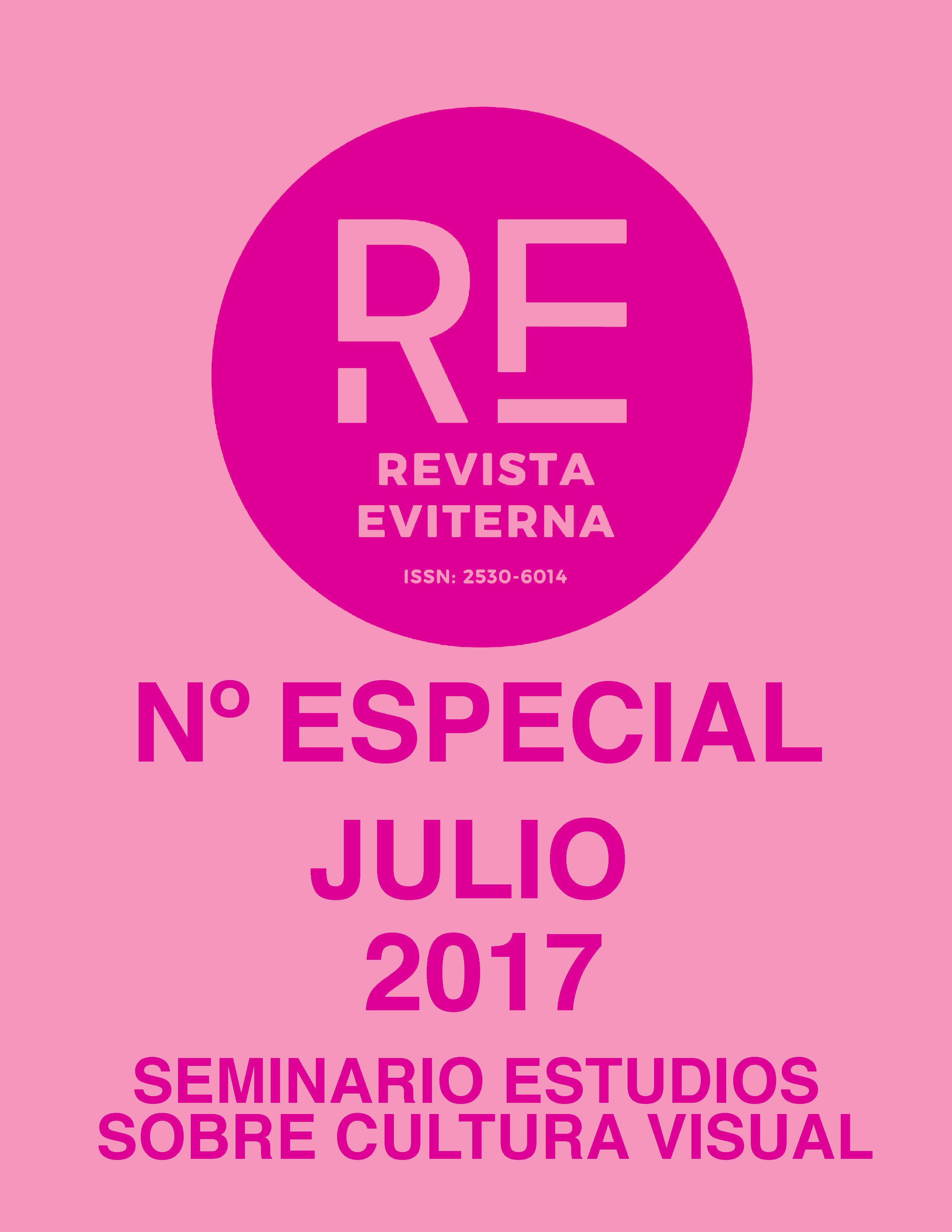Urine: its iconography and use in Art History
DOI:
https://doi.org/10.24310/Eviternare.v1i1.8202Keywords:
Urine; Iconography; Fluids; Maculinity; Abjection; GenderAbstract
We studied how the urinating action and the use of the own urine have been used as an element of artistic expression in different art throughout history disciplines. This tour was organized by subject indexes, from the simplest to the most complex images semiotically, starting with the representation of children who wet, used in all periods as the image of the anecdotal and decorative motif for fountains and gardens. It was followed by other images, though also featuring children, have higher levels of culturally reading. This study was divided into two antagonistic times: the myth of the Golden Age, and privileged natural state for human beings, and the subsequent myth of the fall in which connotes sexuality urination offering new readings from eroticism, pornography and political-propagandistic uses. Contemporary art deserved special attention by incorporating the use of the body and its fluids as examples of human fears and obsessions, characterized the appearance of urine by its radicalism and gender affiliation. This essay concluded with the analysis of images in which the urine is not present but suggested.
Downloads
Metrics
Publication Facts
Reviewer profiles N/A
Author statements
Indexed in
-
—
- Academic society
- N/A
- Publisher
- Universidad de Málaga
References
AGUILAR, Teresa (2013). Cuerpos sin límites, transgresiones carnales en el arte. Casimiro: Madrid.
ALIAGA, Juan Vicente (1997). Bajo vientre. Representaciones de la sexualidad en la cultura y el arte contemporáneos. Conselleria de Cultura, Educació i Ciència: Valencia.
ASENSI, Manuel y VV. (2005). Günter Brus. Quietud nerviosa en el horizonte. MACBA: Barcelona.
BACCHESCHI, Edi (1977). La obra pictórica completa de Guido Reni. Editorial Noguel: Barcelona.
BATAILLE, George (2002). Las lágrimas de Eros. Ensayo Tusquets Editores: Barcelona.
CIRLOT, Lourdes (2001). Andy Warhol. Nerea: Hondarribia.
CORTÉS, José Miguel (1996). El cuerpo mutilado (La Angustia de Muerte en el Arte). Direcció General de Museis i Belle Arts, Conselleria de Cultura, Educaciò i Ciència: Valencia.
DE DIEGO, Estrella (1999). Tristísimo Warhol. Cádillacs, piscinas y otros síndromes modernos, Ediciones Siruela: Madrid.
GALLARDO LÓPEZ, María Dolores (1995). Manual de mitología clásica. Ediciones Clásicas: Madrid.
HERNANDO, Alberto (2013). El arte en carne viva. SD Ediciones: Barcelona.
JULIUS, Anthony (2002). Transgresiones. El arte como provocación. Ediciones Destino: Barcelona.
LÓPEZ EIRE, Antonio y VELASCO LÓPEZ, María del Henar (2012). La mitología griega: lenguaje de dioses y hombres. Arco/Libros S.L.: Madrid.
PHILOSTRATOS (1979). Imágenes. Loeb Classical Library: Londres.
SASLOW, James (1989). Ganímedes en el Renacimiento. La homosexualidad en el arte y en la Sociedad. Nerea: Madrid.
VERNANT, Jean Pierre (2003). El universo, los dioses, los hombres. El relato de los mitos griegos. Editorial Anagrama, Colección Argumentos: Barcelona.
ZUFFI, Stefano (2015). Viaggio intorno al corpo. Mondadori Electra: Milán.
Downloads
Published
How to Cite
Issue
Section
License
All the contents published in Revista Eviterna are subject to the Creative Commons Reconocimento-NoComercia-Compartirigual 4.0 license, the full text of which can be found at <http://creativecommons.org/licenses/by-nc-sa/4.0>
They may be copied, used, disseminated, transmitted and publicly exposed, provided that:
The authorship and original source of your publication (Journal, editorial and URL of the work) are cited.
They are not used for commercial purposes.
The existence and specifications of this use license are mentioned.

Copyright is of two kinds: moral rights and patrimonial rights. Moral rights are perpetual, inalienable, inalienable, inalienable, inalienable and imprescriptible prerogatives.
In accordance with copyright legislation, Revista Eviterna recognizes and respects the moral rights of the authors, as well as the ownership of the economic right, which will be transferred to the University of Malaga for dissemination in open access.
The economic rights refer to the benefits obtained by the use or disclosure of the works. Revista Eviterna is published in open access and is exclusively authorized to carry out or authorize by any means the use, distribution, disclosure, reproduction, adaptation, translation or transformation of the work.
It is the responsibility of the authors to obtain the necessary permissions of the images that are subject to copyright.







12.png)



